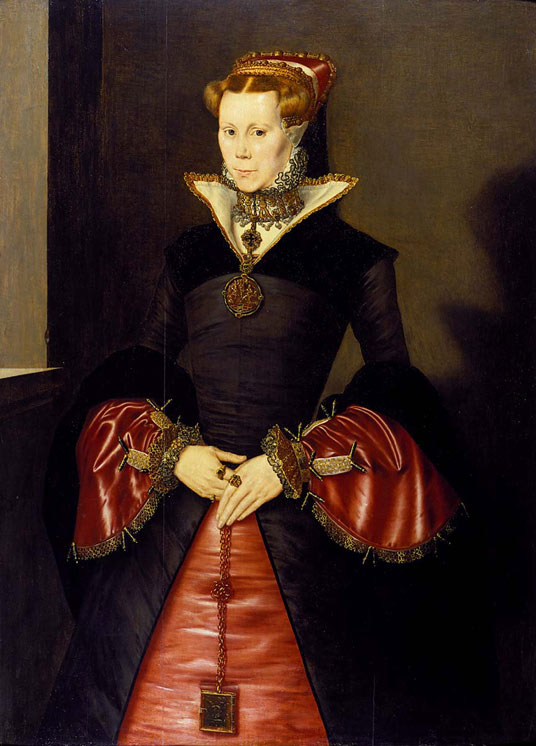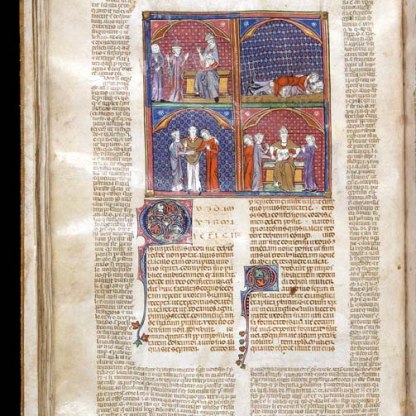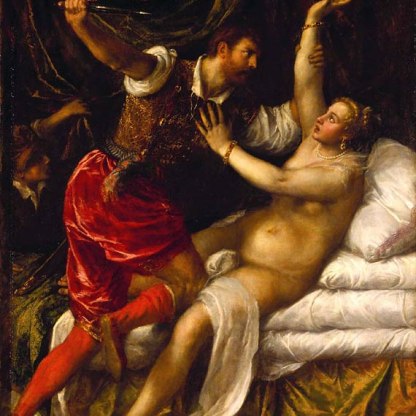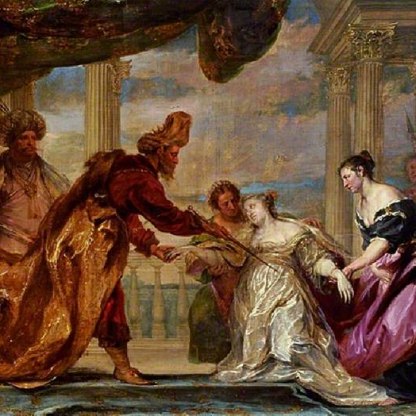Mary Tudor
Mary Tudor (1516–58) was Queen Mary I from 1553 until her death. She was the first female ruler of England. The only child of Henry VIII and his first wife, Katharine of Aragon, she was almost immediately embroiled in European dynastic politics when, at the age of two, she was betrothed to the Dauphin of France. Nothing came of the engagement, and she spent much of her life as a spinster.
She was a highly educated Catholic, fluent in Latin, French, Spanish and Italian, an accomplished player of the lute and clavichord, but her life was not a happy one.
The breakdown of her parents' marriage began in 1528, and by 1531 she was barred from seeing her mother, to whom she nevertheless remained stubbornly loyal. In 1533, at the age of 17, she was declared illegitimate when Henry’s marriage to Katharine was anulled. Henry’s new wife, Anne Boleyn, gave birth to Elizabeth, and Mary was forced to become a lady-in-waiting to her infant half-sister. Further humiliation followed in 1536 when her deprived circumstances forced her to write a letter to Henry, acknowledging her illegitimacy, recognising the divorce from her mother and accepting Henry’s authority as head of the Church.
Henry’s third wife, Jane Seymour, was more sympathetic to Mary. When in 1537 Henry eventually produced a son, Edward, who superseded Mary’s right to inherit the throne, she was re-established in the royal household.
Edward succeeded Henry to the throne, but his reign was short. After his death in 1553, an attempt was made to put Lady Jane Grey upon the throne. Nine days after Jane's coronation, however, Mary marched on London and was herself crowned queen. Although her accession to the throne met with popular acclaim, her insistence on restoring the supremacy of the pope led to strong public opposition. Her popularity waned further when in 1554 she married Philip, son of the hated Spanish King Charles V, later to become Philip II of Spain.
Mary met Protestant opposition uncompromisingly and brutally. In 1555 she oversaw the reintroduction of heresy laws, and over the next three years over three hundred Protestants were burned at the stake. The rightful heir of the house of Tudor had become ‘Bloody Mary'.
Her reign was cut short by stomach cancer in 1558, and she died in the full knowledge that her half-sister Elizabeth would entirely overturn her attempts at reconcilliation with Rome.
Other highlight objects you might like
Other pathways and stories you might like
Sign up to our emails
Be the first to hear about our news, exhibitions, events and more…






